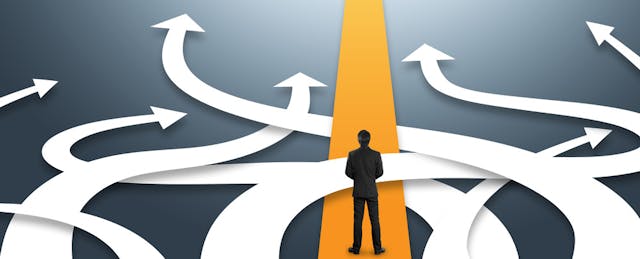Why are postsecondary institutions trying personalized learning? What have faculty and students experienced, for both good and bad? Are there different approaches across diverse institutions and programs?
In our e-Literate TV series on personalized learning we explored several institutions with pilots or long-term programs organized around each student's capabilities and needs. The focus was not on the technology itself but on the institutional and personal aspects. “Personalized learning” is a marketing term, however. A more accurate term of art would be “technology-assisted differentiated instruction.”
As we talk to the people on the front lines of these differentiated instructional approaches—students, faculty and staff with real-world experiences, both good and bad—the most significant theme that emerged was the challenge of helping students that come to class with wildly different starting knowledge and skill levels. Personalized learning should be seen as an effort for institutions to directly support students across the spectrum.
Let’s consider four different views into this theme, based on examples from Essex County College, Middlebury College, and Empire State College.
Non-Traditional Students: The New Majority
The "traditional" college student, ready for college work right out of high school and taking classes full-time, is no longer the norm. The American mission of what we’re trying to do in college has changed: We’ve gone from serving small numbers of select college-bound students, ages 18 to 22 years old, to trying to accommodate almost anyone. This mission of open access impacts community colleges more than any other sector. Some students enter almost ready for the next level of math, needing only to brush up on a few skills. Others begin the school year with math skills at a fourth grade level. On top of that, students come to college with a wide range of metacognitive skills. Some of them have not yet learned how to learn (at least in the context of math).
At Essex County College in Newark, New Jersey, 85 percent of incoming students start in the lowest level developmental math course. But that statistic glosses over a critical factor: there is a huge range of skills and abilities within that 85 percent. ECC President Gale Gibson and VP of Planning, Research and Assessment Douglas Walcerz both described how the low pass rates in these developmental math classes necessitate change. The status quo is not working, and the developmental math results are the primary driver in the school’s low graduation rates. In response, Essex County faculty and staff have designed a new program based on self-regulated learning wrapped around adaptive learning with multiple levels of support.
Not Your Mama’s Alma Mater
But we also found that personalized learning approaches are not just for open-access community colleges, they also have a place within a traditional liberal arts institution. Take a close look at Middlebury College. Even though Middlebury has enjoyed the advantage of an 8:1 student-faculty ratio, educators there are finding room to change and better design instruction for individuals.
You also start to realize that it’s not just that U.S. education is changing. In some ways, college was never quite as uniform as we thought it was. Students have always had individual skill and knowledge levels, but now we have new methods to focus more on the individual.
Giving Credit to Individuals
There is an element of personalized learning that can occur outside of the classroom, and prior learning assessments can have an outsized effect on groups that historically have been underserved in higher education. Not too long ago, Michael heard somebody say, “We don’t need more college-ready students; we need more student-ready colleges.” In a logical and just world, we would start with what the student knows, rather than with what one professor or group of professors decided one semester would be “the curriculum,” and we would give the student credit for whatever college-level knowledge she has.
At Empire State College, for example, they don’t try to figure out which institution-defined competencies you can check off on your way to an institution-defined collection of competencies that they call a “degree.” Rather, they make an effort to have credentialed experts look at what you’ve done and what you know to find existing strengths that deserve to be recognized and credentialed. This focus on the individual can have an enormous impact, particularly for women of color.
Who Doesn’t Like to Be Addressed as a Person?
Personalized learning, it turns out, is really about grappling with this overarching problem: educating the real people—not a generalization of students—who are coming into the classroom.
One major challenge we face in US higher education is figuring out how to serve this wide variety of students. How do you aid recent high school graduates while at the same time dealing with working adults who are coming back to school? How do you improve remedial math success rates with students ranging from fourth grade levels of preparation to those just needing to brush up on a few minor skills?
At the EDUCAUSE Learning Initiative (ELI), we discussed the cultural issue of focusing on the individual with Malcolm Brown and Veronica Diaz, after watching several of the clips referenced above.
When you see and hear the compelling stories and challenges in the videos, it becomes more apparent that we have to experiment with education that’s tailored to individual people, or to much finer-grained definitions of who we’re dealing with. We don’t have the option of living with the status quo, as described in these first hand views from faculty and students and staff.


